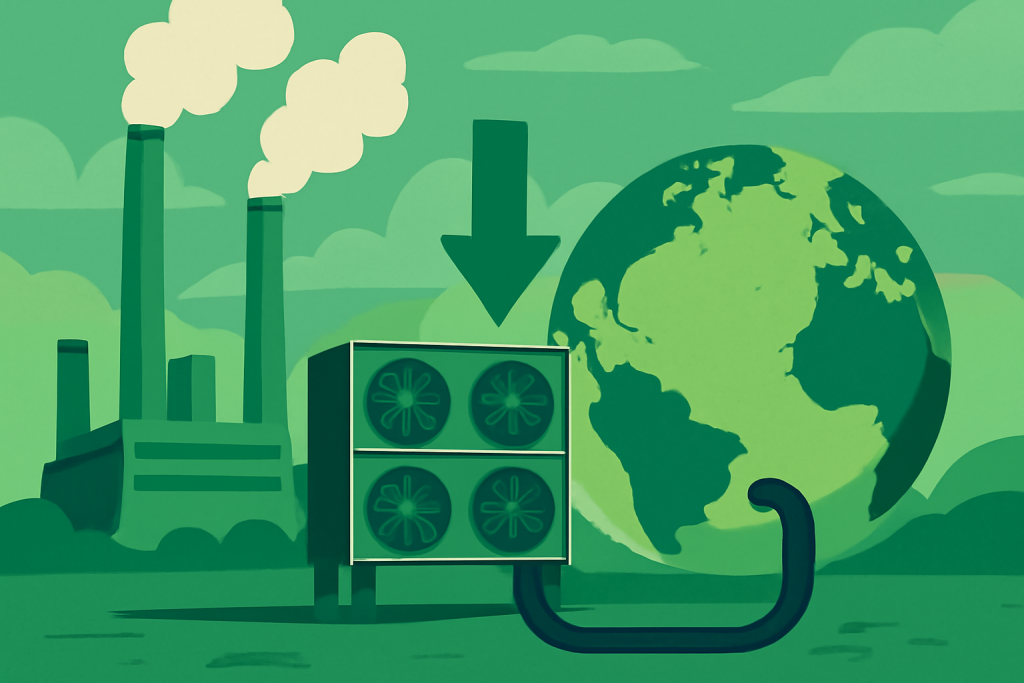As climate change accelerates, the pressure to mitigate its effects is mounting. One of the most promising technologies to combat this global crisis is carbon capture and storage (CCS). This technology is rapidly gaining attention for its potential to reduce carbon dioxide (CO2) emissions. Let’s break it down and explore how CCS could play a pivotal role in addressing climate change.

What is Carbon Capture and Storage (CCS)?
Carbon Capture and Storage (CCS) captures carbon dioxide emissions from power plants or industrial processes before they reach the atmosphere. Once captured, CO2 is transported and stored underground in geological formations, preventing it from contributing to the greenhouse effect. The goal is to reduce the overall levels of CO2 in the atmosphere and slow global warming.
The Three Key Steps in CCS:
- Capture: CO2 separates from other gases during industrial processes or energy generation.
- Transport: After capture, CO2 compresses and transports via pipelines or ships to suitable storage sites.
- Storage: The CO2 injects into deep geological formations, such as depleted oil and gas fields or deep saline aquifers.
These three stages combine to prevent CO2 from escaping into the atmosphere, offering a way to reduce carbon footprints in hard-to-decarbonize industries.
Why Is CCS So Important?
To fight climate change, we must dramatically reduce global CO2 emissions. The Intergovernmental Panel on Climate Change (IPCC) states that achieving net-zero emissions by mid-century is critical to limiting global warming to 1.5°C above pre-industrial levels. However, some sectors, such as heavy industry and energy generation, are difficult to decarbonize with renewable energy alone. This is where CCS comes in.
By capturing emissions from industries like cement manufacturing, steel production, and fossil fuel-based power generation, CCS could significantly reduce the volume of CO2 released into the atmosphere. According to the Global CCS Institute, CCS could contribute up to 20% of the emissions reductions needed to meet international climate goals by 2050.
Emerging Trends in Carbon Capture
CCS technology has existed for years, but recent advancements are improving its viability and efficiency. Several key trends are driving the growth of CCS and transforming its role in fighting climate change:
- Increasing Investment in Research and Development: Governments and private companies are investing more in CCS research. For example, the U.S. Department of Energy is funding large-scale projects to improve capture efficiency and reduce costs. Companies like ExxonMobil and Shell are also investing heavily to scale up CCS projects.
- Direct Air Capture (DAC): Direct Air Capture (DAC) captures CO2 directly from the air, rather than from point sources like factories. Though still in the early stages, DAC has the potential to remove significant amounts of CO2 from the atmosphere, especially when powered by renewable energy.
- Carbon Utilization: Companies are exploring ways to repurpose captured CO2. They’re turning it into building materials, fuels, or other products, creating an economic incentive for CCS and promoting a circular carbon economy.
- Government Incentives and Policies: Governments are increasingly recognizing CCS as a key strategy. The Biden administration, for example, has made CCS a priority and is offering funding and tax incentives to promote large-scale projects.
Challenges and Limitations of CCS
Despite its promise, CCS faces significant challenges:
- High Costs: The process of capturing, transporting, and storing CO2 is expensive. Although costs have decreased, many CCS projects still require government subsidies or carbon pricing mechanisms to be financially viable.
- Public Perception and NIMBYism: Some communities oppose storing CO2 underground, fearing leaks or long-term safety issues. Though geological formations have been tested for CO2 storage, concerns persist, creating challenges in gaining local approval for CCS projects.
- Storage Capacity: Geological storage sites have limited capacity. While there are many suitable locations, the scale of CO2 emissions requires vast amounts of storage space. Some regions may not have enough capacity, necessitating careful planning.
- Infrastructure and Logistics: Building the infrastructure to transport CO2 from capture sites to storage locations requires substantial investment and coordination across sectors.
The Future of CCS
Despite these challenges, the future of CCS looks promising. Countries and industries are realizing that CCS will be a critical tool in reducing emissions, particularly for sectors that are hard to decarbonize. As technology improves and costs decrease, CCS could become a cornerstone of global efforts to achieve net-zero emissions.
Moreover, combining carbon capture with other sustainability efforts, such as renewable energy, could create a powerful synergy that accelerates the transition to a cleaner, more sustainable future. With continued investment and research, CCS could become central to solving one of the world’s most pressing environmental challenges.
References:
- Global CCS Institute (2020) The Global Status of CCS 2020. Available at: https://globalccsinstitute.com
- U.S. Department of Energy (2021) Carbon Capture and Storage. Available at: https://www.energy.gov
- International Energy Agency (2020) CCUS in Clean Energy Transitions. Available at: https://www.iea.org









